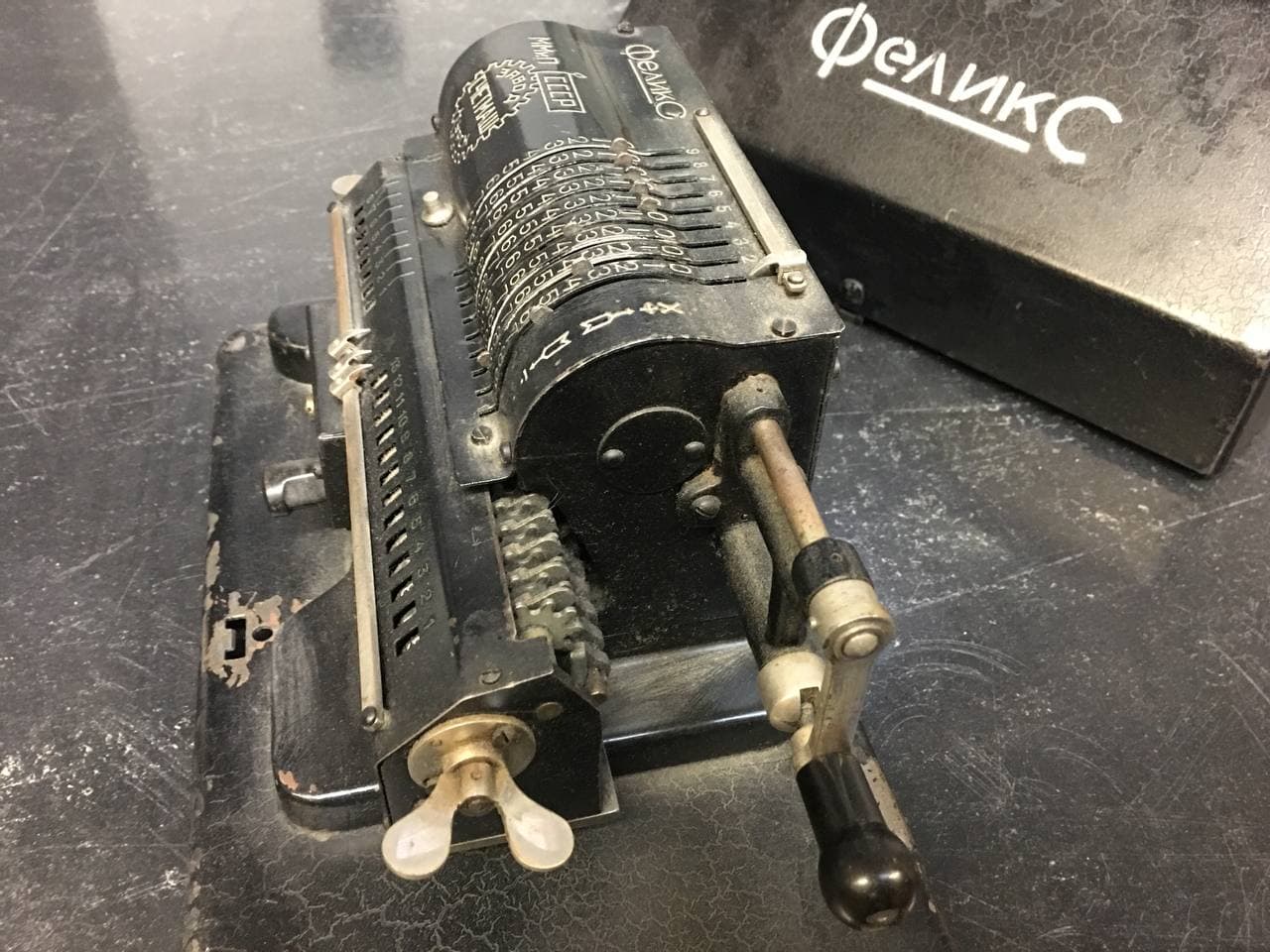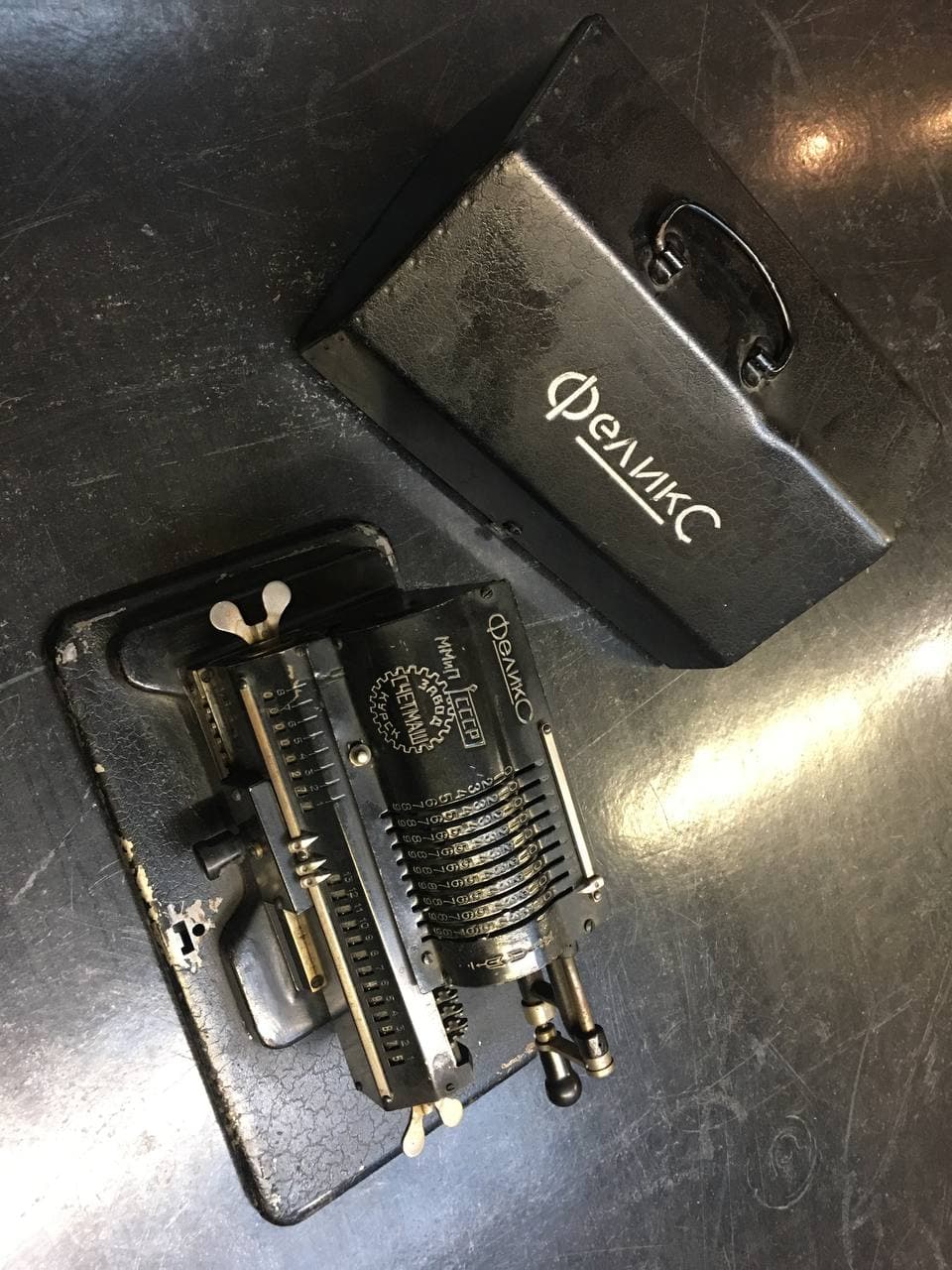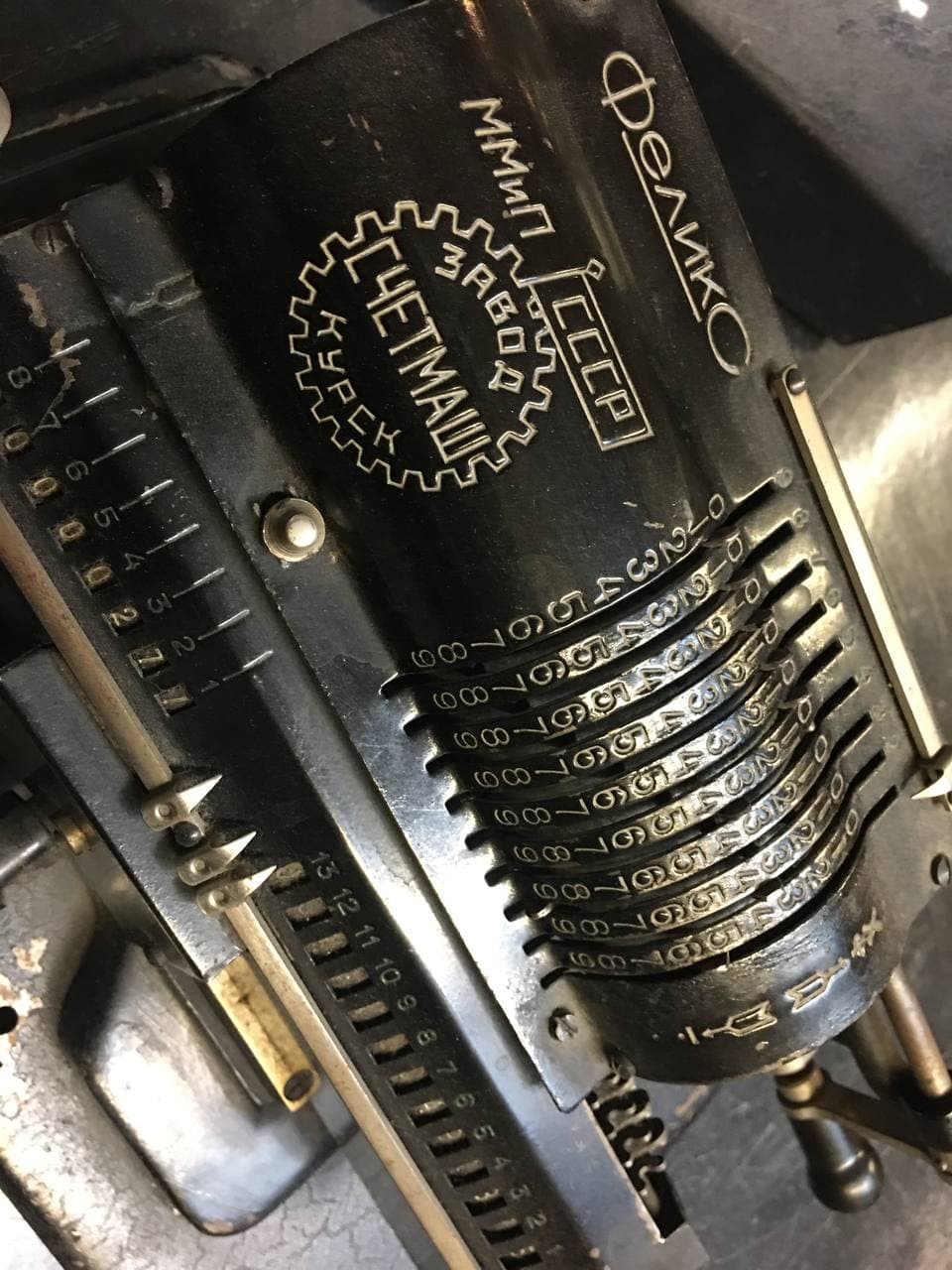|
|

  
| Felix | | USSR, 1929 | | "Felix" was the most widespread adding machine in the USSR. Named after Felix Dzerzhinsky, the head and creator of the first two Soviet state-security organizations, the Cheka and the OGPU, a secret police for the post-revolutionary Soviet regime. It was produced from 1929 to 1978 with a total circulation of several million copies. In total, more than two dozen modifications of the adding machine were created. The main manufacturers were the factories of calculating machines in Kursk ("Schetmash"), in Penza (Penza plant of computer technology) and in Moscow (Plant of calculating and analytical machines named after V. D. Kalmykov (SAM)). This counting machine is a modification of the Odhner Arithmometer. This counting machine is a modification of the Odhner Arithmometer. It allows you to work with operands up to 9 characters long and receive a response up to 13 characters long (up to 8 for the quotient of division). Adding machine "Felix" consists of a fixed box with slots, in which the movement of 9 levers sets the given number, and a movable carriage with a revolution counter with 8 windows on the left and a result counter with 13 windows on the right. On the left and right ends of the carriage there is one lamb each, by rotating it from itself until it clicks, the revolution counter and the result counter are reset to zero, respectively. To the right of the stationary box is a handle, when rotating, arithmetic operations are performed. When the handle is turned one revolution, depending on the position of the carriage, the number in one or another window of the revolution counter increases by on. Under the windows of the counters there is a bar with movable metal arrows, by means of which the position of the comma in the numbers on the counters is marked. The arrows are introduced for the convenience of the operator and do not affect the mechanics algorithm. When the counter overflows or a negative number is received, the call built into the adding machine is triggered. This means that you need to cancel the previous operation by turning the knob one turn in the opposite direction and read the result in the counter windows. To perform calculations, it is required to pull out the handle on the right and turn it in the direction indicated on the instrument body for the corresponding operation. For addition and subtraction, it is sufficient to perform two consecutive turns of the knob. The first is required to enter into the counter the first term or decrement, typed on the levers. Then you need to dial the second number with the levers and turn the knob in the direction required to perform the addition or subtraction. To multiply a given number, for example, by a two-digit multiplier, you need to set the given number with the levers, scroll the knob in the direction of summation by as many revolutions as there are units in the multiplier, and then move the carriage one interval to the right and scroll the knob by as many revolutions as tens of multiplier. The result of the multiplication appears in the windows of the result counter. The counter of revolutions when the procedure is performed correctly, the multiplier is displayed. The manuals for the device users also describe in detail the methods of performing the division operation, and contain recommendations for reducing the number of turns of the device knob. The device weighs 3.5 kg . | | |
|
|